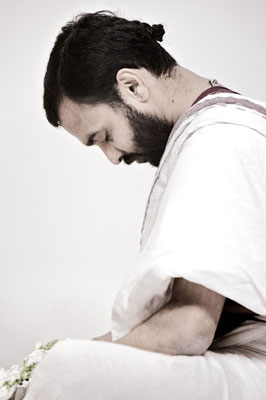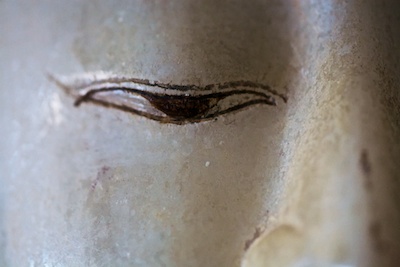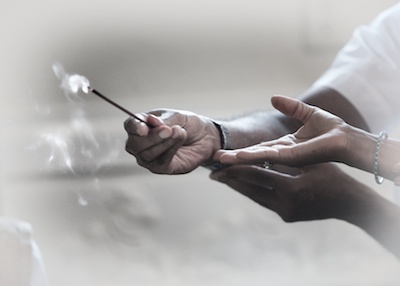


Frequently Asked Questions
What is the Surya Ram Meditation?
Surya Ram Meditation, developed by Michael Mamas, naturally promotes a person’s evolutionary growth and well-being through the self-normalizing process. It has a profound impact on stress reduction. It is not just the superficial stress of one’s workday that is addressed, but the deeper stresses carried in the mind and body throughout one’s life.
 The many benefits of Surya Ram Meditation include:
The many benefits of Surya Ram Meditation include:
- A sharp, focused mind
- Increased health and vitality
- Greater happiness
- Abundant creativity
- Inner peace and harmony
There are numerous meditation programs available in contemporary society. Many impose a conditioning or unnatural programming upon the mind. Surya Ram Meditation is an effortless process that is easy to learn and undeniably effective.
I have done other meditations. What makes this one different?
The Surya Ram Meditation is a transcending meditation. Rather than focusing, controlling, concentrating, or visualizing to gain mastery over the awareness, this meditation simply gives our consciousness the space to self-correct—unwind and unravel naturally, to rest into its true exquisite nature.
I’ve been doing the Surya Ram Meditation for a few days now. Why should I keep doing it?
The Surya Ram Meditation cultures the physiology to embody what exists at the depth of everyone’s being—the Transcendent. It’s a process that takes time. It’s like lifting weights. To have a home gym is one thing, but developing the body requires that the weights be used over time to achieve and maintain health.
Why is it recommended to meditate twice a day, once in the a.m. and once in p.m.?
 Ideally, we want activity after our meditation. It’s like dying a cloth. You dip the cloth in the dye, then you put it out in the sunshine. Much of the dye fades away, but some remains. What remains is firmly established. Then you dip it in the dye again, and back into the sunshine, over and over. Each time some dye stays and the cloth gets deeper and deeper in color. Meditating is the same way.
Ideally, we want activity after our meditation. It’s like dying a cloth. You dip the cloth in the dye, then you put it out in the sunshine. Much of the dye fades away, but some remains. What remains is firmly established. Then you dip it in the dye again, and back into the sunshine, over and over. Each time some dye stays and the cloth gets deeper and deeper in color. Meditating is the same way.
It’s good for our physiology to get into a routine with our meditation. Maybe we get up in the morning, take a shower, and then we do our meditation. In the evening, the routine might be a little different. We like to set up our practice so that we meditate-act, meditate-act. If, however, the day gets away from us and we haven’t had a chance to meditate, then it’s fine to just meditate and go to sleep. Some people like to meditate in bed. Then when it comes time for the five minutes rest, they just lie down and go to sleep.
Why is five minutes of rest necessary right after meditation?
The most important part of meditation is the first five minutes after meditation. When we meditate, we dive into the depth of our being and then we come back out into relativity. That movement from one to the other, when done gradually and properly, is what integrates the relative aspect of our being with the Transcendental part. Taking a full five minutes to come out very slowly is extremely important because that is when the physiology integrates. If we resonate with that fine fabric at the depth of our being for 20 minutes while we meditate and then jump up and engage in activity, it can be very jarring. It breaks up the integration process. Oftentimes, the part of our being we are aware of comes back first. But we are interested in subtler aspects of our being which we may not be currently aware of. These subtler aspects of our being, critically important to our health and evolution, require a longer coming out time to be fully integrated. Taking five minutes to lie down and come out slowly is very important.
How do I know when the 20 minutes is up?
 It’s best to keep a clock or watch where we can see it comfortably. Never do we want to set an alarm. Some companies make a meditation clock that uses a gentle chime which is okay. After awhile, we begin to feel when the time is up. Just to be sure, we can crack one eye and check the clock without compromising our meditation. Studies have shown that opening one eye is less disturbing to meditation than opening both.
It’s best to keep a clock or watch where we can see it comfortably. Never do we want to set an alarm. Some companies make a meditation clock that uses a gentle chime which is okay. After awhile, we begin to feel when the time is up. Just to be sure, we can crack one eye and check the clock without compromising our meditation. Studies have shown that opening one eye is less disturbing to meditation than opening both.
What if I don’t have the time to meditate 20 minutes twice a day? Can I just do it once a day?
Optimum is 20 minutes twice a day with five minutes rest. However, we do the best we can in working with our life/work schedules and meditation. It is better to meditate for a shorter period of time than to skip a meditation entirely. In other words, five minutes of meditation some time during the day is better than no meditation at all. What’s important is to be regular with our meditations.
Are there times when I can meditate more than 20 minutes twice a day?
People who are ill can meditate all they want. They probably won’t be comfortable meditating all that long because they’re sick, so we don’t really worry about it. Pregnant women can meditate all they want! When mother transcends, baby transcends. For everyone else, 20 minutes twice daily is recommended—more is not necessarily better. It is not a good idea to meditate for an hour one day and only 20 minutes the next. It is better to stay regular with our meditations and integrate them with activity.
Is there a certain posture or special way to sit for the Surya meditation?
There is no specific posture for this meditation. There is really only one thing that matters—sit comfortably. For some people, sitting on the floor or on a cushion cross-legged is comfortable. For others, sitting in a chair is more favorable. After awhile if sitting upright becomes an effort, then we slouch. If slouching becomes an effort, then we slump. It that becomes an effort, we then lie down and continue to meditate.
It is important, however, to begin each meditation session sitting upright. This position tells the body that it is getting ready to meditate so the body can automatically respond. It sets up a certain brain wave function in the physiology that is conducive to transcending.
What is the Self (in the context of coming back onto the Self)?
 The Self exists transgradiently. It may be the physical body. If there is a place of discomfort, our attention may be drawn there and we may experience the Self on the Physical Level. On the deeper, Psychoenergetic Level, the Self becomes something more abstract—a sense or feeling permeated with thoughts or emotions. On a deeper level still, it becomes an even more vague or expanded sense of our own being. In proper meditation, the sense of Self gravitates to whatever level is most natural in the moment. At the surface, the Self is easily perceived, but on deeper levels, it is more abstract. It doesn’t matter what level we pick the Self up on as long as it is effortless and we resist the desire to guide our awareness to a place we feel would be “appropriate.”
The Self exists transgradiently. It may be the physical body. If there is a place of discomfort, our attention may be drawn there and we may experience the Self on the Physical Level. On the deeper, Psychoenergetic Level, the Self becomes something more abstract—a sense or feeling permeated with thoughts or emotions. On a deeper level still, it becomes an even more vague or expanded sense of our own being. In proper meditation, the sense of Self gravitates to whatever level is most natural in the moment. At the surface, the Self is easily perceived, but on deeper levels, it is more abstract. It doesn’t matter what level we pick the Self up on as long as it is effortless and we resist the desire to guide our awareness to a place we feel would be “appropriate.”
Sometimes I have thoughts all through my meditation. I thought meditation was the absence of all thoughts. What am I doing wrong?
Thoughts are an important part of meditation. When stress is released from the physiology, it oftentimes manifests as thoughts. If thoughts come up, we don’t try to push them out. We allow the thoughts to be there and flow through. They are just stresses waving good-bye as they leave our physiology. Only when it is effortless, do we favor the awareness to go back onto the Self.
What should I be experiencing during meditation?
During meditation, we accommodate the natural unfolding process. We don’t try to get our physiology to align with a preconceived notion of what we think we are supposed to experience. We rely on the inner intelligence of the self-normalizing process to guide that process for us. What it looks like for each individual varies from one meditation to the next. No matter what our experience of any given meditation is, it is important to have the attitude that something good is happening.
Sometimes my meditations are so blissful and wonderful. Other times, they are no fun at all. Why can’t I just have blissful meditations?
We don’t meditate for the experience of meditation. We meditate because of the results we get in our daily lives. Really, there is no such thing as a bad meditation. Meditation has two aspects: the inward stroke and the outward stroke.
The Inward Stroke
We feel the inward stroke when we close our eyes, settle down, and our awareness naturally gravitates to deeper and deeper experiences of the Self—more abstract, expanded, calm, and blissful.
The Outward Stroke
Equally important is the outward stroke of meditation which is the natural result of stress release. When we close our eyes to meditate, things naturally settle down and become more restful.
Stresses and strains are then released from the physiology which purifies as it rests. When these stresses and strains are released from the physiology, it very often is experienced as thoughts. When our meditations are filled with thoughts, emotions, or agitation of any kind, we are experiencing the outward stroke. This is a very good thing.
The physiology is purifying.
When I meditate, I find that I get head pressure, like the start of a headache. What causes this?
 Sometimes people will complain of some amount of head pressure during meditation. Almost always, this is a result of some amount of efforting. If in our meditations we feel some head pressure, we should make sure that some degree of efforting has not crept into our meditation. That efforting usually comes in the form of trying to control the mind or push out thoughts. Thoughts are a normal part of meditation. When it is effortless to allow our awareness to go back onto the Self, only then do we do so.
Sometimes people will complain of some amount of head pressure during meditation. Almost always, this is a result of some amount of efforting. If in our meditations we feel some head pressure, we should make sure that some degree of efforting has not crept into our meditation. That efforting usually comes in the form of trying to control the mind or push out thoughts. Thoughts are a normal part of meditation. When it is effortless to allow our awareness to go back onto the Self, only then do we do so.
What if I have thoughts and sense my Self at the same time?
You may sometimes experience the sense of Self and thoughts going on simultaneously. That is fine. Do not resist either. As thoughts drop away naturally, innocently favor the Self.
I can’t seem to sit still for 20 minutes, sometimes I just have to shift in my seat or wiggle. What can I do about that?
If stress releases and we’re purifying rapidly, the body might feel inclined to wiggle. If it would require some effort to not wiggle, then we wiggle. If we feel an itch and it would take effort not to scratch, then we scratch.
Sometimes when I meditate I feel like crying. Should I allow myself to cry?
Emotions are treated like any other thought. If emotions come up in our meditation, we do not resist. If they come up and we’re crying or we’re laughing, then we cry or we laugh. Emotions are a natural part of the purification process. We don’t try to perpetuate the emotions, and we don’t try to suppress them. When it’s effortless to go back onto the Self, we do so.
Every time I try to meditate I fall asleep. Is this normal?
Some people say they’ve stopped meditating because they kept falling asleep. But sleep is an important part of meditation. If stress is purifying out quickly, the physiology may not be able to maintain consciousness. If it would require some effort to stay awake, then we go to sleep. In this meditation we have the attitude that “Sleep is King.” If we do fall asleep during meditation, it is very good. When we wake up, if we have time, it’s good to meditate a little longer, maybe another five to ten minutes and then lie down for another five minutes.
I like to play music and burn a candle or incense while meditating. Is that okay?
 Meditation is an inward practice. As we innocently favor the Self, the natural tendency is for the whole experience to go inward. Therefore we don’t want to burn candles, light incense, or play music while we are meditating. Though they may be beautiful, they bring our attention ever so slightly outward, so better to avoid them. For the same reason, we don’t recommend open-eye or walking meditations.
Meditation is an inward practice. As we innocently favor the Self, the natural tendency is for the whole experience to go inward. Therefore we don’t want to burn candles, light incense, or play music while we are meditating. Though they may be beautiful, they bring our attention ever so slightly outward, so better to avoid them. For the same reason, we don’t recommend open-eye or walking meditations.
When I meditate I sometimes have these great visions and insights. What do these mean? Are they important to remember?
Many people report having visions while meditating. We treat them just like another thought. If, during a meditation, we believe we are visited by a guide or a prophet or even someone we haven’t seen in a long time, we treat it like a thought, and when it’s effortless to go back onto the Self, we do so.
Do I need to meditate in a certain place every time I meditate?
The nice thing about the Surya Ram Meditation is that you can do it just about anywhere. If we’re doing the Surya Ram Meditation properly, it can be done in the privacy of our own home, at work, or on a plane. The one parameter to keep in mind is that it’s better not to meditate outside. Yogis meditate in caves for a reason. It’s nice to have a container which holds this state. If we’re outside, it just disperses out with the breeze.
I learned a different meditation technique that I really like. Can I sometimes use that along with the Surya Ram Meditation?
It’s not a good idea to mix techniques, even if they both seem to be doing the same thing. I think it was Rama Krishna who said, “If you’re going down a river, better not to have one of your feet in each of two different boats. Better to have them both in one boat.” Put another way, you may eat ketchup and peanut butter, but it’s better not to mix them. It’s not necessarily because one is better than the other. We respect the qualities of each, which differ.
Is it more powerful to meditate with other people?
Meditating with other people is even more powerful than meditating alone. It is likened to lighting a candle in a dark room. If we light one candle, it illuminates the room somewhat. If we light ten candles and group them near each other, the increase in light is magnified considerably. The power of people meditating in groups increases by the square of the number of people in the room. If there is one person, it has the power of one. If there are two people, it has the power of four. If there are 100 people, it has the power of 10,000! Studies have shown that groups of people meditating in cities for an entire weekend significantly lower the crime rate in those cities for that time period.
Can I hold hands while I meditate with someone?
It is important that you not be physically touching another person while meditating because each physiology is designed as a self-sufficient unit.
Can I meditate with my pets?
 It’s not good to meditate with animals in the room. When we are transcending, we allow something delicate to wake up in the depth of our own being, something unique to our human physiology. If there are two different physiology types in the room, there is an incongruity. The benefit of the meditation is significantly reduced for the person and insignificantly enhanced for the animal. It is an inefficient energy transfer. Better to meditate alone in the room and when the meditation is through, we will have more to offer our pets.
It’s not good to meditate with animals in the room. When we are transcending, we allow something delicate to wake up in the depth of our own being, something unique to our human physiology. If there are two different physiology types in the room, there is an incongruity. The benefit of the meditation is significantly reduced for the person and insignificantly enhanced for the animal. It is an inefficient energy transfer. Better to meditate alone in the room and when the meditation is through, we will have more to offer our pets.
When should I shower, before or after meditation?
It is good to shower before meditation. If a person showers after meditation, it is best to wait 30-60 minutes. It is best not to shower immediately after meditation because it shocks the nervous system. Also, studies show that chemicals are produced on the skin during meditation which are beneficial to the skin; we don’t want to wash them off. For the same reason, we don’t want to meditate and then go swimming, nor is it a good idea to meditate in water (nor saunas, steam rooms, etc…).
What about exercising after meditation?
This is an individual thing, but overall it’s better to wait at least a half-hour after meditating to begin any rigorous exercise. If that’s not long enough, you will be able to tell because it just won’t feel right.
What about eating before meditating?
 It’s better not to eat a meal right before meditation. When we eat, all the body’s energy goes to digesting food. It’s not ideal to meditate if we’re uncomfortably hungry either. So if we’re hungry, better to grab a very light snack, meditate, and then wait until later to have a meal.
It’s better not to eat a meal right before meditation. When we eat, all the body’s energy goes to digesting food. It’s not ideal to meditate if we’re uncomfortably hungry either. So if we’re hungry, better to grab a very light snack, meditate, and then wait until later to have a meal.
Connect with Michael Mamas